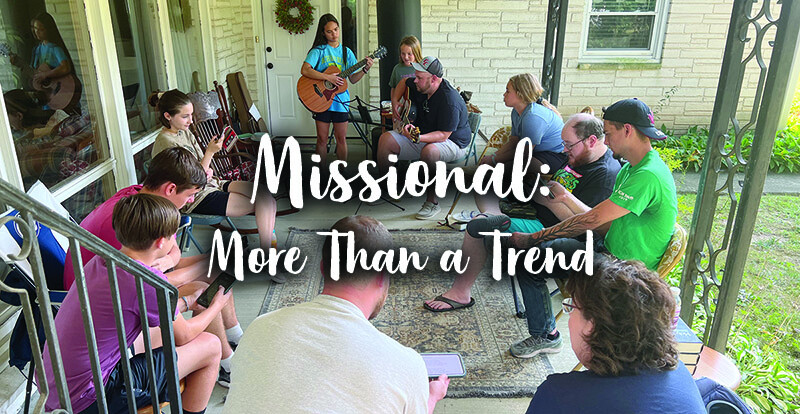
Over the past two decades, an emphasis has been placed on missional living and ministry in the wider Church. I recall attending the Exponential Conference in Orlando, a conference aimed at church planters, in 2008. Speaker after speaker took the stage to call those in attendance to pursue something more than merely growing Sunday morning worship attendance. We were challenged to bring the Kingdom of God here on earth as it is in heaven, right in our own communities - helping our neighborhoods experience the Good News of Jesus by restoring what was broken. It was a revelation for me to see ministry in this way, something strikingly different from my church experiences up to that point.
Being missional wasn’t a new concept, as it drew its heritage to the earliest days of the church. Paul’s time in Athens amongst the philosophers is an often-cited example of understanding the context of a community and speaking Jesus into it. However, as the reality of church decline spread during the late 20th century, there was the ever-growing pursuit of increasing worship attendance through the Church Growth Movement. The missional conversation arose to reengage what it meant to minister outside the structural walls of the church building. Books were written, conferences were hosted, and so the Church pursued missionality – being “on mission” for Jesus in every area of life.
The Churches of God, General Conference (CGGC) stepped into the missional conversation with full force in 2010, particularly as we spent 10 years investing in over 140 denominational leaders through the Missional Leadership Initiative (MLI). And our leaders and churches faithfully responded. Homes were repaired. Faith-based sports programs were launched. Daycare centers were opened. The CGGC was engaging communities with faithfulness and Kingdom-mindedness. Those pastors still talk about how transformative MLI was and how it still motivates their work today.
New conversations about the Church became emphasized as time marched on, as they typically do. Missionality faded from the new books category, and conferences began to highlight other topics. Quickly following the missional conversation with the strong reminder of the importance of discipleship. The church should redeem the neighborhood but also continue to help the neighborhood follow Jesus. Microchurches soon followed, emphasizing that the size of the church isn’t as important as the impact the church is having for the Kingdom. All of these conversations are good and right for the Church.
When new conversations arise, however, it’s easy to follow along with the current trend. We’re always hopeful to find the silver bullet that will take our churches to greater fruitfulness. Yet, we quickly realize, there is no silver bullet. The challenges that the Church continues to face require a range of strategies faithful to the mission and way of Jesus. For the good that has come from our collective pursuit of missionality, I want to encourage you to keep on pressing further in how you and your church can be on mission. Pay attention to the new conversations, but don’t lose sight of the distance we have come. Don’t let missional living and ministry be a trend that has come and gone, but make it an essential foundation of the Church regardless of the topic of the day.
A few questions for reflection:
- How has the missional conversation affected you, your leadership, and your church in the last twenty years?
- What fruit has come from your missional efforts?
- What next step in missionality is God calling you to take?
CGGC eNews—Vol. 18, No. 19





Login To Leave Comment